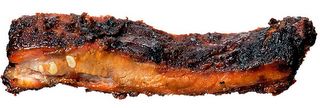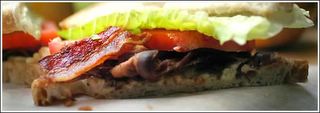Fourth of July Cookouts
- Use tongs. A fork does the same to your food as it would to a can of beer ahead of serving.
- Oil the food, not the cooking grate. But understand, you're taking sides in one of the most enduring debates in the game.
- Try lump charcoal. Just as there are choices in what to cook, there are options for what to cook upon. Of the 1 million tons of charcoal sold in the U.S. last year, barely 10% was specialty lump charcoal, but that percentage has grown fivefold in a decade. Aficionados claim advantages in flavor, and they note that lump charcoal still in the recognizable shape of wood is free of what one major briquette manufacturer acknowledges are "ingredients other than charcoal" in its charcoal.
- To maintain temperatures for long-cooking food, such as a whole turkey, follow this formula: For a standard 22 1/2 -inch grill, use 25 briquettes (or the equivalent amount of lump charcoal) on each side for the first hour, adding eight per side each hour thereafter. If you want your father-in-law to believe that you have a magical touch, don't let him see you counting.
- If you are using wood chips to add smoke flavor, soak them in water and then wrap them in aluminum foil. Use a fork to open several quarter-size holes in the foil. Throw the foil packet on the coals just before grilling. This gives you a steady flow of smoke rather than a short blast.
- Add soaked rosemary branches to the coals when cooking meat. It will perfume your patio and flavor the food.
Although most barbecue relies on an extensive wardrobe of dry rubs, mops and sauces for its flavor, Santa Maria tri-tip comes to the table pretty much au naturel. The traditional seasoning mixture is garlic salt and black pepper. This works fine, but put together a quick garlic paste in the blender and it's even better. It lets you better control the saltiness of the meat, and the oil in the marinade helps create a crunchier crust.
This paste doesn't need much time to do its thing: Slather it on an hour before cooking and you're ready to go. Though it might seem pretty strong (six cloves of garlic!), the flavor is subtle: an initial burst of pepper followed by little more than a lingering sweetness from the garlic.
peaches, plums and apricots. Marian Burros tells us that there are plenty of condiments out there besides ketchup and mustard.
Marlena Spieler says that if you're going to have a party involving food, be sure to invite some Greeks. Sandy Thorn Clark looks at the boom in Organic Farming. Peggy Grodinsky looks at the end of an era...a Houston-area watermelon stand that had been open for 46 years is finally out of business.
Andrea Pyenson looks at the maturation of the Ice Cream Sandwich.





